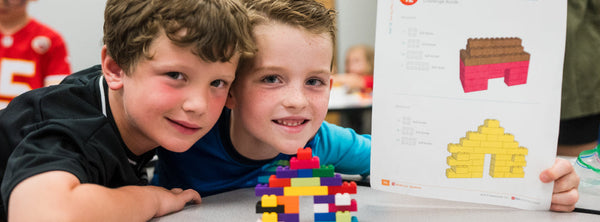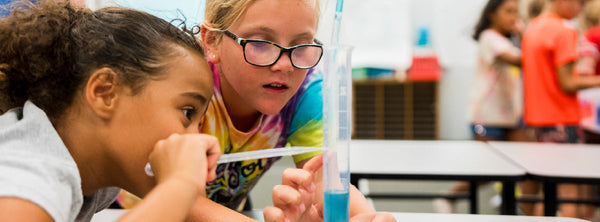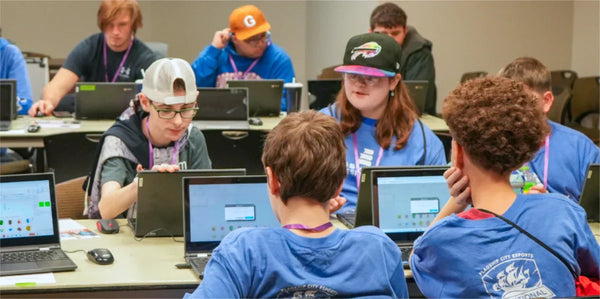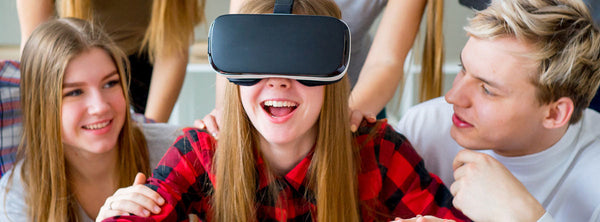
STEM-in-Action: How Video Games Can Bring STEM Concepts to Life
Nothing sparks excitement quite like video games. Learners are captivated by the immersive, interactive experience, while educators are eager to explore the many STEM connections woven into the gameplay. It’s a win-win! Gaming offers something for everyone. It draws learners into various cross-curricular topics while teaching essential career-readiness skills in a hands-on environment. That’s why video games are the ultimate game-changer in education.
Unlock the Power of Literacy
Video games have come a long way. Modern gaming invites learners to be virtual storytellers, designing unique environments and characters from the ground up.

Seeing literacy strategies in game-based learning can improve literacy skills and give learners insight into its application in programming and design fields.
For example, Game Design inherently explores two valuable literacy devices.
- Cause-and-effect: Every programmed event triggers a consequence. When learners create a conditional for their events, they decide how something in the game will act based on the performed action. This mirrors the cause-and-effect progression of literature, knowing that a player’s decisions will directly impact the storyline (see curriculum sample).
- Creating a theme: Game Design units, such as Castle Explorer, Scavenger Hunt and Escape Room, challenge learners to develop cohesive environments grounded in themes. It’s more than just setting the scene. It’s paying attention to all the characters and details that bring their story to life.
While some games center around story building, others provide an established narrative. That’s where STEM Meets the Science of Reading.
Research suggests that when learners delve deeply into a specific topic or have a firm grasp on the subject, they are better equipped to apply its concepts to their reading (Schwartz, 2023).
Similar to a virtual field trip, STEM in video games allows gamers to interact with stories and objects they may never have encountered otherwise. As they play and explore, learners gain background knowledge and build vocabulary that supports reading comprehension.
Make Concepts Tangible
When we spend time engaging with content firsthand, we learn more. Video games do this masterfully.
Do you remember the craze surrounding the game Angry Birds? Players launched birds at an angle that struck pigs perched on towers ready to topple. Educators, being the creative superheroes they are, seized the popularity of this game and turned something learners already loved into an engaging learning opportunity.
Some used it to teach physics topics like force and motion, while others made mathematical connections and modeled rocket launch simulations (Moore-Russo et al., 2015). In this way, playing and analyzing the game made STEM concepts more concrete.
The STEM Forged Esports Program takes this to the next level! In Rocket League, players drive into the thrilling world of rocket-powered car soccer, applying real-world physics concepts in a high-energy and competitive environment. Complete with a standards-aligned curriculum and optional live virtual instructors, leading learners through an interactive STEM experience has never been simpler.

Power Up Skills for STEM Careers
While 'video game designer' may seem like the obvious choice, there are countless career paths for learners to explore through gamification, as players develop skills applicable to various professions.
Priming Your Students' Power Skills in the virtual world through targeted game-based instruction prepares learners with career-readiness skills they need to succeed in the real world.
For instance, Esports’ competitive environment teaches learners to be active listeners and effective communicators. The fast-paced game also requires learners to quickly adapt and solve problems creatively. Practicing these skills in a highly engaging way encourages learners to master and apply them instinctively in other settings.
Many industries rely on computer programming, so coders are often in high demand. Game Design is an accessible way for educators to introduce coding. Through step-by-step scaffolded lessons, learners at any skill level design 3D games and scenarios that bring their concepts into (virtual) reality.
Game-Based Learning: How Can I Get Started?
Implementing a STEM and video game-based curriculum is simpler than you think! From virtual instructors and step-by-step guides, PCS provides the tools you need to teach in a way that resonates with today's learners.
I'm interested in video games and STEM! Which resources should I explore first?
Check out these gaming-forward programs and activities your learners will love!

Inspire the next generation of computer programmers with Scratch Camp. These 12 one-hour lessons designed for grades 1-3 are key to getting learners excited about coding while building interactive storyboards and games with audio, video, animated characters and more!

Learners in grades 4-12 will love Game Design. Fun topics like 3D modeling, animation and programming ensure learners are motivated and engaged, while they build skills they can use in any career.

STEM Forged programs, like Esports for grade levels 6-12, give educators the confidence to harness the power of video games! The online portal offers a view of learners’ progress, including unique insights into skill development, and supports esports programs of any size

Spark learners' interest in coding by letting them program their own game! Download this FREE guide to get started.

Author: Jessica Ventre
An experienced elementary educator and science instructional coach, Jessica’s passion for STEM instruction and student-led learning is always at the forefront of her lessons and professional development workshops.









